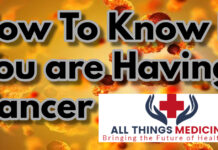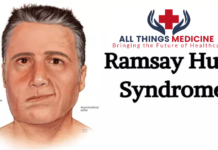Page Contents
What is sunburn and what causes it? this article answers this very common and simple abnormality that tends to occur at least once in every individual’s life.
Sunburn
Sunburn- red, painful skin that feels hot to the touch. Usually appears within a few hours after too much exposure to ultraviolet (UV) light from sunshine or artificial sources, such as sunlamps. Sunburn may take several days or longer to fade.
Intense, repeated sun exposure that results in sunburn increases your risk of other skin deformities and certain diseases. these include dry or wrinkled skin, dark spots, rough spots and skin cancers, such as melanomas.
Symptoms of Sunburn
The symptoms of sunburn include:
- Redness or pinkness of the skin
- Skin that feels warm or hot to touch
- Pain, tenderness and itching
- Swelling
- Small fluid-filled blisters, which may break
- Headache, fever, nausea and fatigue
Causes
Sunburns are caused by exposure to too much ultraviolet (UV) light. UV radiation is a wavelength of sunlight in a range too short for the human eye to see. Ultraviolet A (UVA) is the type of solar radiation most associated with skin ageing (photoaging). Ultraviolet B (UVB) is associated with sunburn. Exposure to both types of radiation is associated with developing skin cancer. Sunlamps and tanning beds also produce UV light and can cause sunburn.
Melanin is the dark pigment in the outer layer of skin (epidermis) that gives your skin its normal colour. When you are exposed to UV light, your body protects itself by accelerating the production of melanin. the extra melanin creates the darker colour of a tan.
A suntan is your body’s way of blocking the UV rays to prevent sunburn and other skin damage, but, the protection only goes as far. The amount of melanin you produce is determined genetically. Eventually, UV light causes the skin to burn, causing pain, redness and swelling.
You can get sunburn on cool, hazy or cloudy days. As much as 80 per cent of UV rays pass through clouds. Snow, sand, water and other surfaces can reflect UV rays, burning your skin as severely as direct sunlight.
Risk factors
- Having a light skin, blue eyes and red or blonde hair
- Living or vacationing somewhere sunny, warm or at high altitude
- Working outdoors
- Mixing outdoor recreation and drinking alcohol
- Having a history of sunburn
- Regularly exposing unprotected skin to UV light from sunlight or artificial sources, such as tanning beds
- Taking a drug that makes you more likely to burn (photosensitizing medications)
Diagnosis
Your doctor is likely to conduct a physical exam and ask questions about your symptoms, UV exposure and sunburn history.
If you develop a sunburn or skin reaction after relatively minor exposures to sunlight, your doctor may recommend photo testing. During photo testing, small areas of your skin are exposed to measured amounts of UVA and UVB light to try to reproduce the problem. If your skin reacts to the UV radiation, you’re considered sensitive to sunlight (photosensitive).

Complications
Intense, repeated sun exposure that results in sunburn increases your risk of other skin damage and certain diseases. These include premature ageing of your skin (photo ageing) and skin cancer.
Premature ageing of the skin
sun exposure and repeated sunburns accelerate the skin’s ageing process, making you look older than you actually are. Skin changes caused by UV light are called photo ageing. The results of photo ageing include:
- Weakening of connective tissues, which reduces the skin,s strength and elasticity
- Deep wrinkles
- Dry, Rough skin
- Fine red veins on your cheeks, nose and ears
- Freckles, mostly on your face and shoulders
- Dark or discoloured spots (macules) on your face, back of hands, arms, chest and upper back – also called lentigines
Prevention
Use these methods to prevent sunburn, even on cool, cloudy or hazy days, and be extra careful around water, snow and sand because they reflect the sun,s rays. In addition, UV light is more intense at high altitudes.
Avoid sun exposure between 10 am and 4 pm
The sun’s rays are the strongest during these hours of the day, so try to schedule outdoor activities for other times. If you can’t do that, limit the length of time you’re in the sun. Seek shade when possible.
Avoid sun tanning beds
Using tanning beds to obtain a base tan does not decrease your risk of sunburn
Cover Up
When outside, wear a wide-brimmed hat and clothing that covers you, including your arms and legs. Dark colours offer more protection, as do tightly woven fabrics. Consider using gear specially designed to provide sun protection. Check the label for its ultraviolet protection factor (UPF), which indicates how effectively a fabric blocks damaging sunlight. The higher the number, the better.
Use sunscreen frequently and generously
No matter what your skin type is, use a sunscreen with an SPF of 15 or greater and broad-spectrum protection against UVA and UVB rays. The American Academy of Dermatology recommends using a broad-spectrum sunscreen with an SPF of 30 or greater
Treatment

Put a cold, damp towel on your skin. Do this for 10 to 15 minutes a few times every day. That will help take some of the heat out of your skin. You can also take frequent cool baths or showers to help relieve the pain. As soon as you get out of the bathtub or shower, gently pat yourself dry, but leave a little water on your skin. Then, apply a moisturizer to help trap the water in your skin. This will help ease the dryness.
Use a moisturizer that contains aloe vera or soy to help soothe sunburned skin. Lotions that have something called aloe vera in them help make your skin feel better. Be careful not to use lotions or creams that have any of the ingredients listed
- Petroleum
- Benzocaine
- Lidocaine
Things with petroleum trap the heat in your skin (you do not want that) and benzocaine and lidocaine can bother and irritate your skin. If a particular area feels especially uncomfortable, you may want to apply a hydrocortisone cream that you can buy without a prescription.
Ask your parents about taking ibuprofen if the sunburn really hurts. this will help reduce any swelling, redness and discomfort.
Drink extra water. sunburn makes you get very dry inside, so you need to drink a lot. Drinking extra water when you are sunburned helps prevent dehydration.
Leave blisters alone. If your skin blisters, do not pop them because that makes the sunburn worse. Blistering skin means you have a second-degree sunburn. Allow the blisters to heal and protect you from infection.
Inform your parents if you feel sick. They might need to take you to the doctor if you feel dizzy, weak, sick to your stomach, cold, or just not yourself. Those things can mean that the sunburn is making you sick and you need immediate attention.
Take extra care to protect sunburned skin while it heals. Wear clothing that covers your skin when outdoors. Tightly woven fabrics work best. When you hold the fabric up to a bright light, You should not see any light coming through.
Courtesy of my junior fellow Sona Noor. That’s all one needs to know about What is sunburn and what causes it?. Stay away from the Sun people. In the meantime here are some medical mnemonics to keep your mind mingled.













